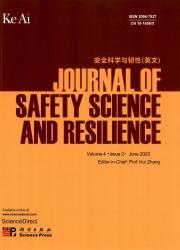Telecom network fraud has become the most common and concerning type of crime and is an important public security incident that threatens urban resilience. Therefore, preventing a continuous rise in telecommunications and network fraud will help establish a resilient urban governance system. Undertaking the spatiotemporal forecasting of telecommunications-network fraud trends is of significant importance for aiding public security agencies in proactive crime prevention and implementing targeted anti-fraud campaigns. This study presents a telecommunication network fraudulent crime prediction method called TSE-Tran, which integrates temporal representation and transformer architecture. The time-series data of telecommunication-network fraud occurrences were input into the TimesNet module, which maps the sequence data to a more precise feature representation tensor that accounts for both intra- and inter-cycle features. Subsequently, the data are fed into the transformer-encoder module for further encoding, capturing long-range dependencies in the time-series data. Finally, occurrences of future telecommunication network frauds are predicted by a fully connected layer. The results of the study demonstrate that the proposed TSE-Tran method outperforms benchmark methods in terms of prediction accuracy. The results of this study are expected to aid in the prevention and control of telecommunications and network frauds effectively strengthen the resilience of urban development and the ability to respond to public security incidents.


